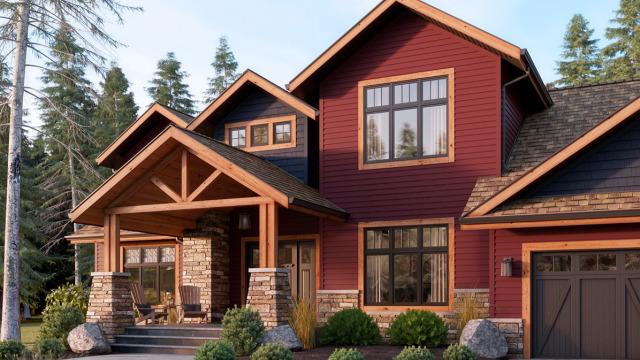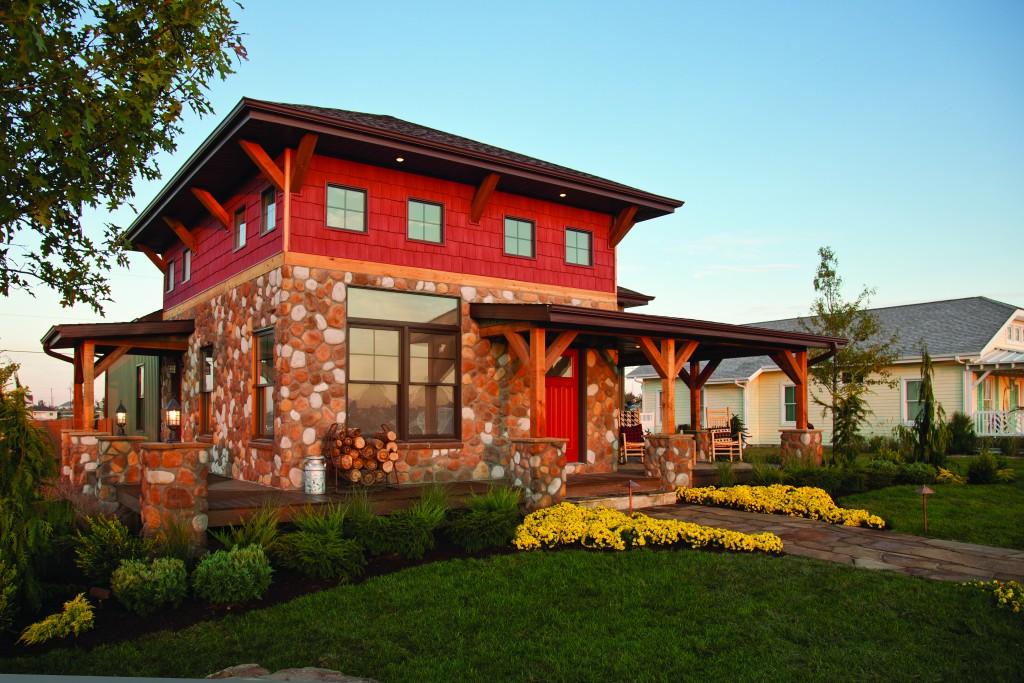How to Mix and Match Siding and Stone
So, you’re getting ready to choose siding and stone for your house. Where do you start? Do you pick out the stone first and then try to find a siding color that matches? Do you start with the siding and find a stone profile that complements the siding? Truth be told, there really is no set-in-stone (so to speak) method to mixing and matching stone and siding. But, by breaking down the process into smaller steps we can make it easier to tackle. Here are a few tips to help you get started choosing siding and stone.

How to mix and match siding and stone in four easy steps.
Step 1: Choose the stone profile you want.
Personally, I start with deciding the stone profile first. If it is a large area of stone, I might go with a larger stone profile – say cut cobblestone or field stone. If it is a smaller application, I might use a ledgestone or shadow ledgestone.
Step 2: Choose your stone color and characteristics.
Then I look at the characteristics of the stone. Is it mainly a horizontal application or more random? How does it go with the architectural style of the home? For instance, Prairie style looks great with a very horizontal stone such as true stack or shadow ledgestone. True stack also works well with more modern styles.
Step 3: Choose a siding color that comes from the stone.
Once I’ve narrowed down the stone color and profile, the fun begins. I will often have a sample of my stone selection on hand when I start pairing it with siding colors. I start by giving the stone the squint test – squinting your eyes allows you to focus on color by blurring out everything else. With this technique, I can determine what is the most dominant or prevalent color. Then I look for a siding color that blends with or complements the stone.
Don’t go overboard with trying to match stone and siding. For one, that is near-impossible to do. It also may result in a “why bother” effect, where from the street you won’t be able to tell where the stone starts and the siding ends. Because stone is typically closest to the ground, I like the stone to be the darkest color to help anchor the composition. Don’t go so dark that the stone and siding colors don’t relate to one another, however.
Step 4: Choose a secondary house color for trim and accents.
Because most style blends include a variety of colors, I use the secondary colors in the stone as inspiration for a second body color, trim, or accent colors. This is a great way to really take your home’s exterior to the next level. Oh, and don’t forget before you finalize your selections, make sure you take the siding and the stone outside – into the sun and the environment where it will be seen.
While you’re making your selections, you can start with a color that is safe (although not beige). You can then try something that is daring or slightly out of your comfort zone. Before you know it, you’ve found a balance and home exterior that is nothing short of inspiring.

In short.
Don’t worry if you start with the siding and then select the stone. You’re not alone! Our colorist at Housing Design Matters, Tobi Saunders, approaches it exactly that way – but she admits she ends up bouncing around between the stone and the siding collections before making her final selections. If you settle on your first choice, odds are you didn’t try hard enough.
Bottom line – have fun with it! It sounds like a daunting task, but the end result is worth your trouble. What an exciting opportunity to bring character, color and texture to the outside of your home!
Ready to choose siding and stone colors for your home?
See what your home will look like before your remodel begins with Ply Gem’s visualizer tool. This tool allows you to upload a photo of your home and try out different siding, stone veneer, and trim options so you’ll know what will work best on your home. Get started outfitting your home here.
